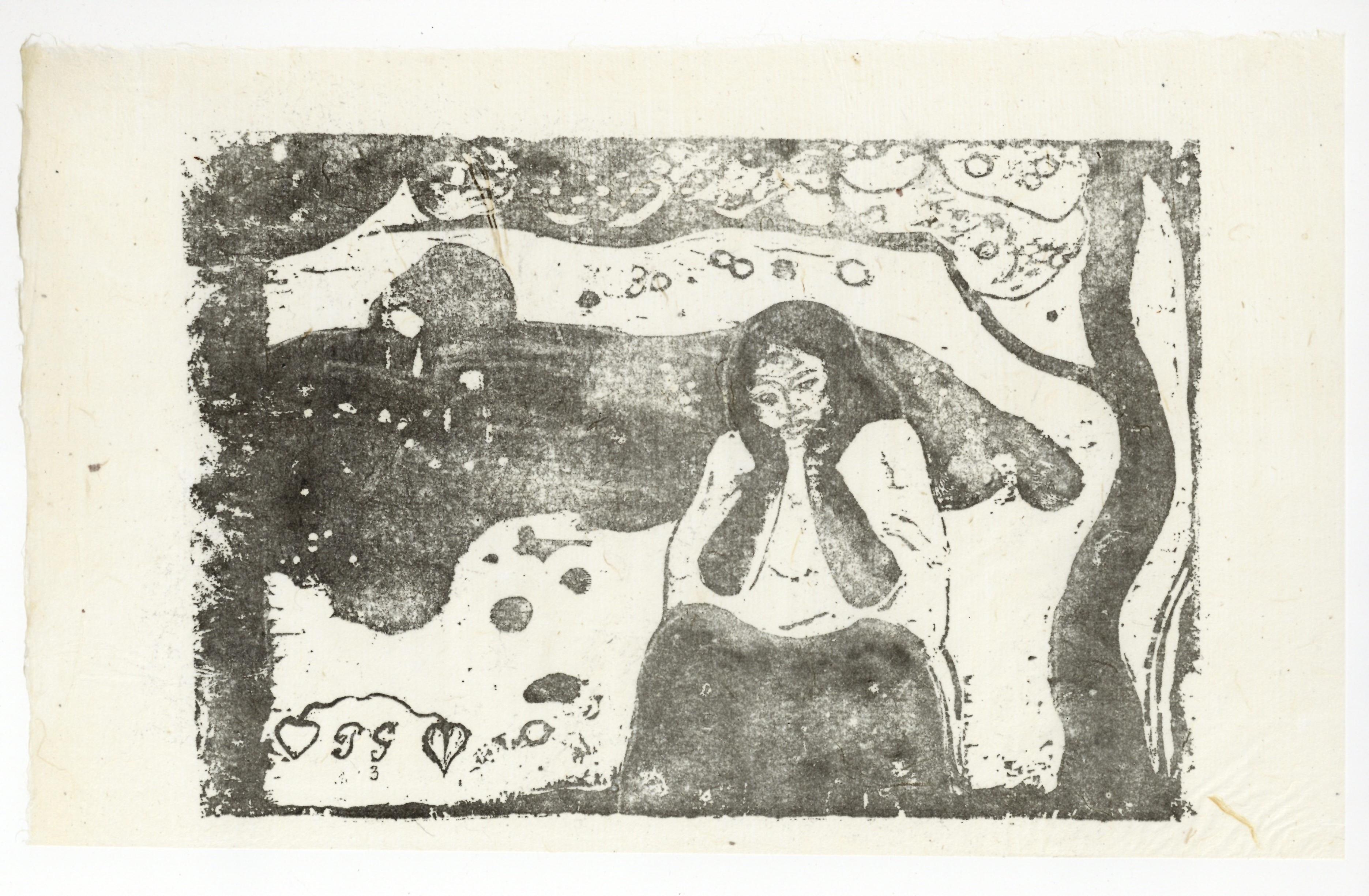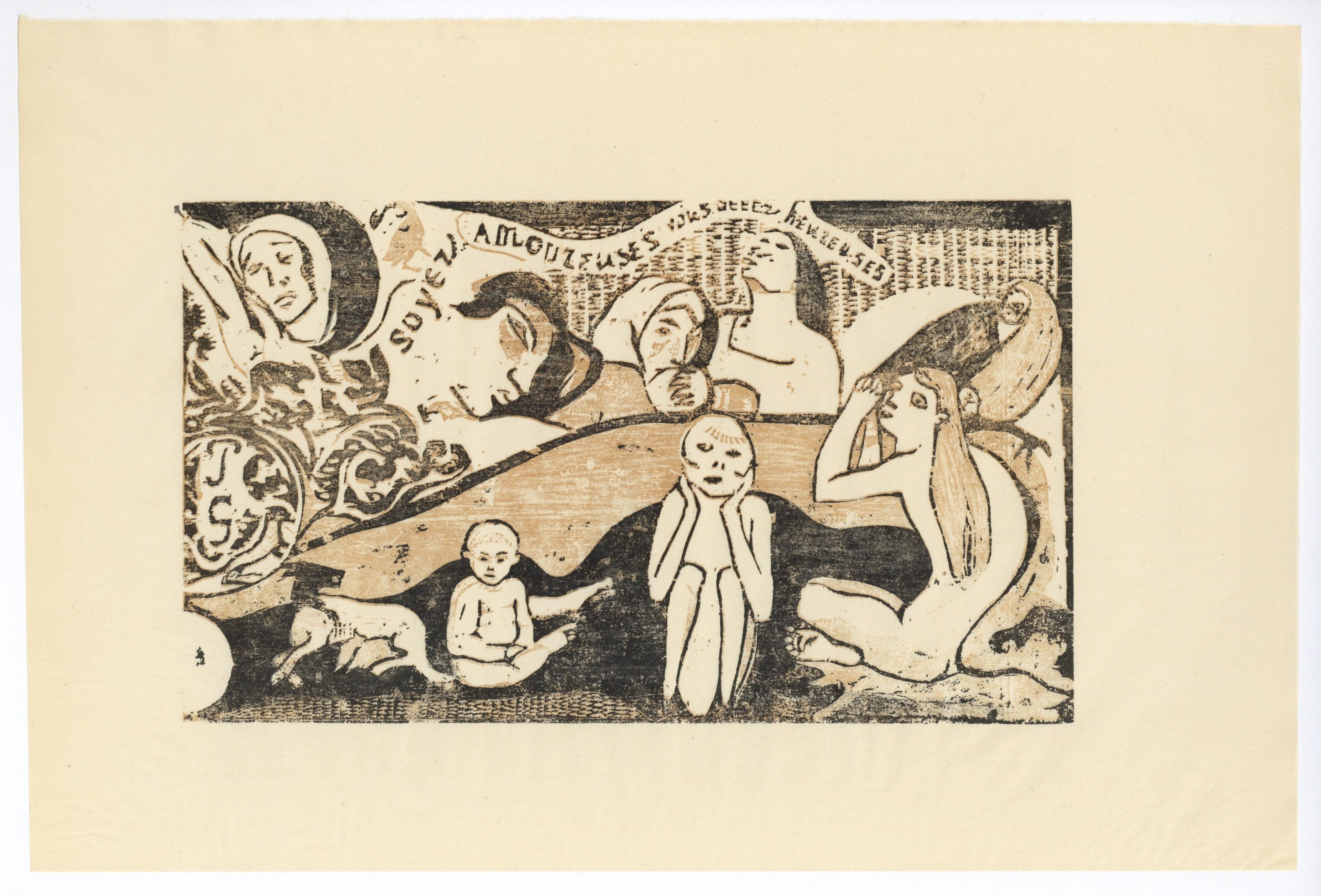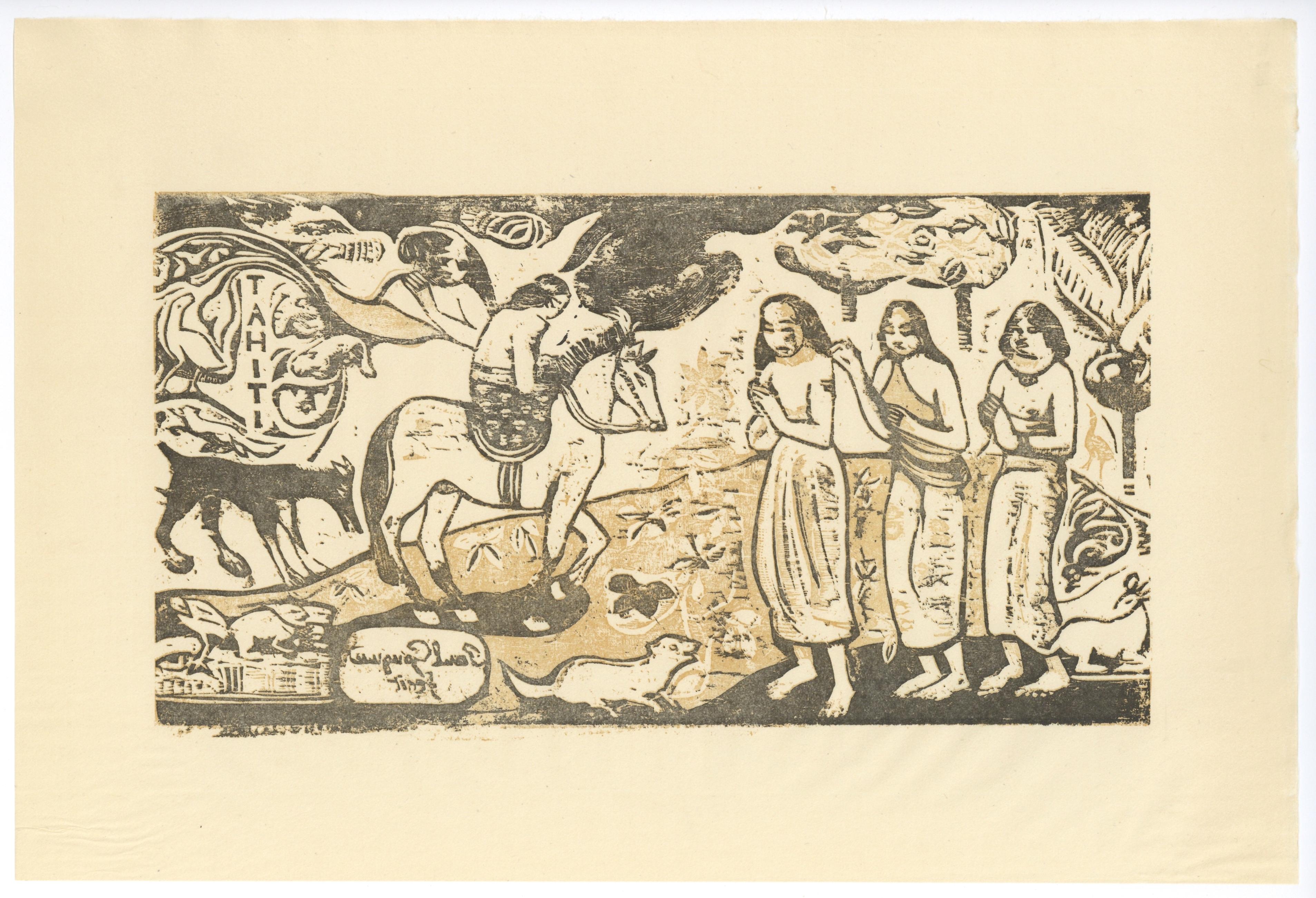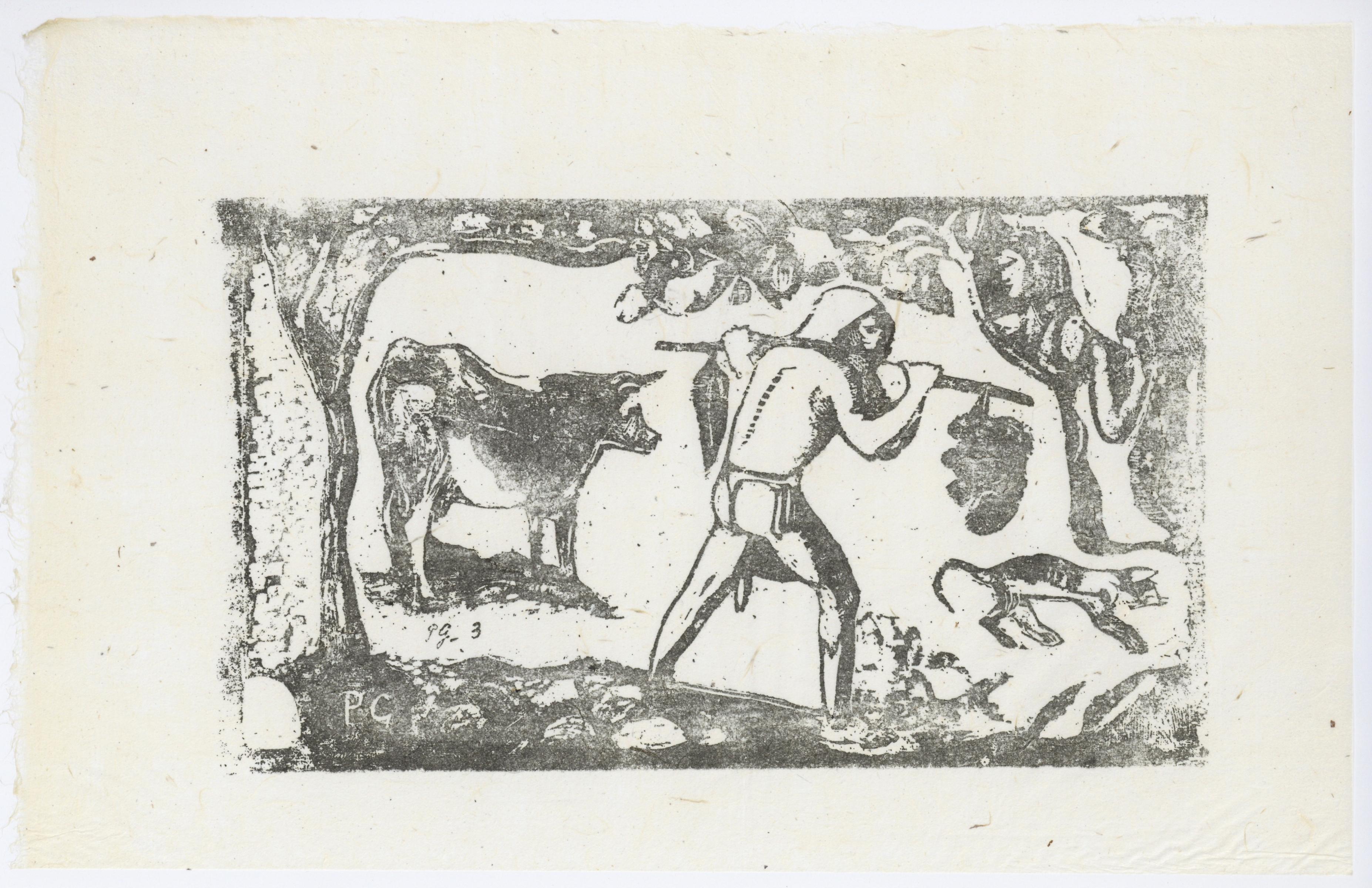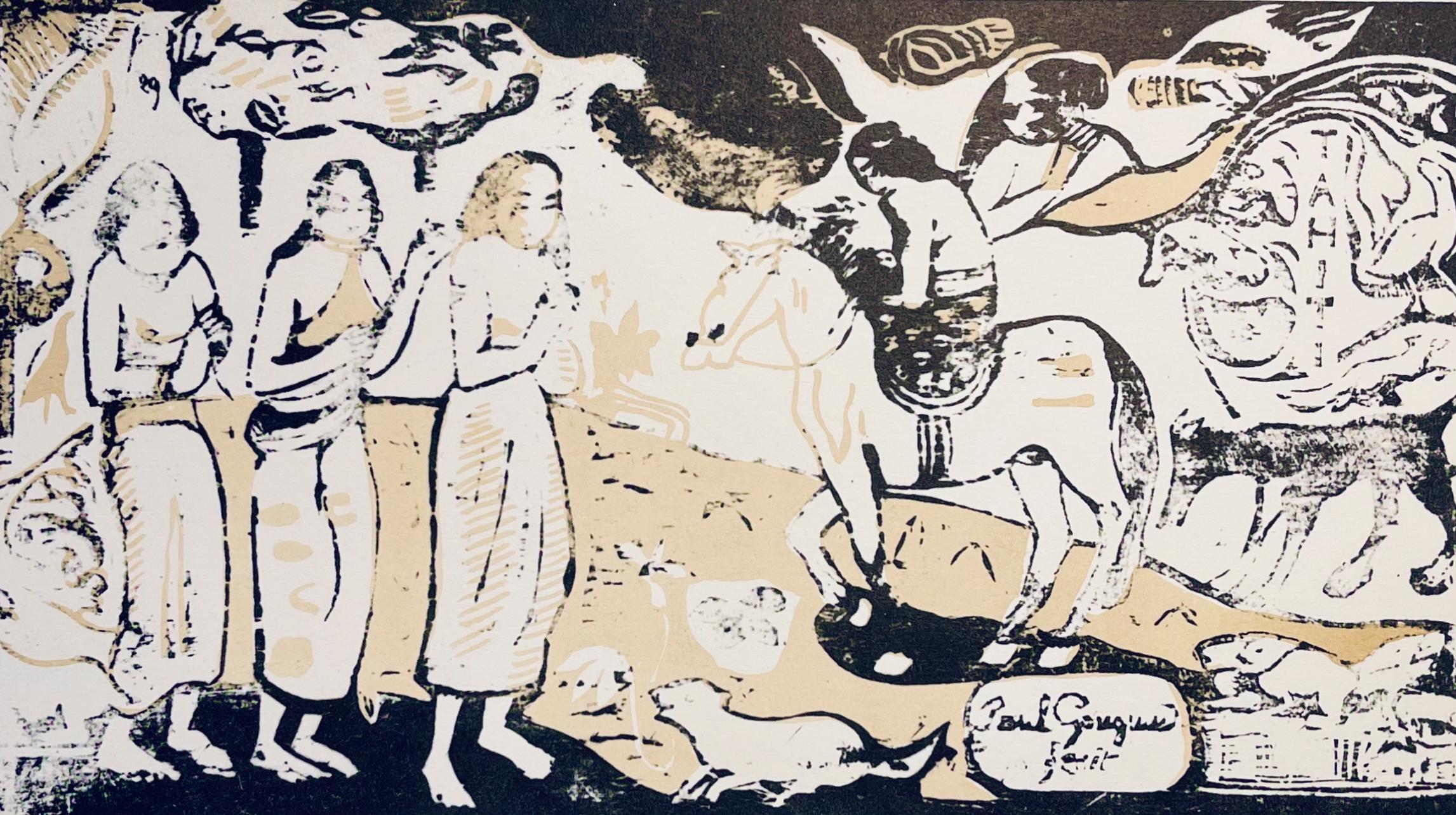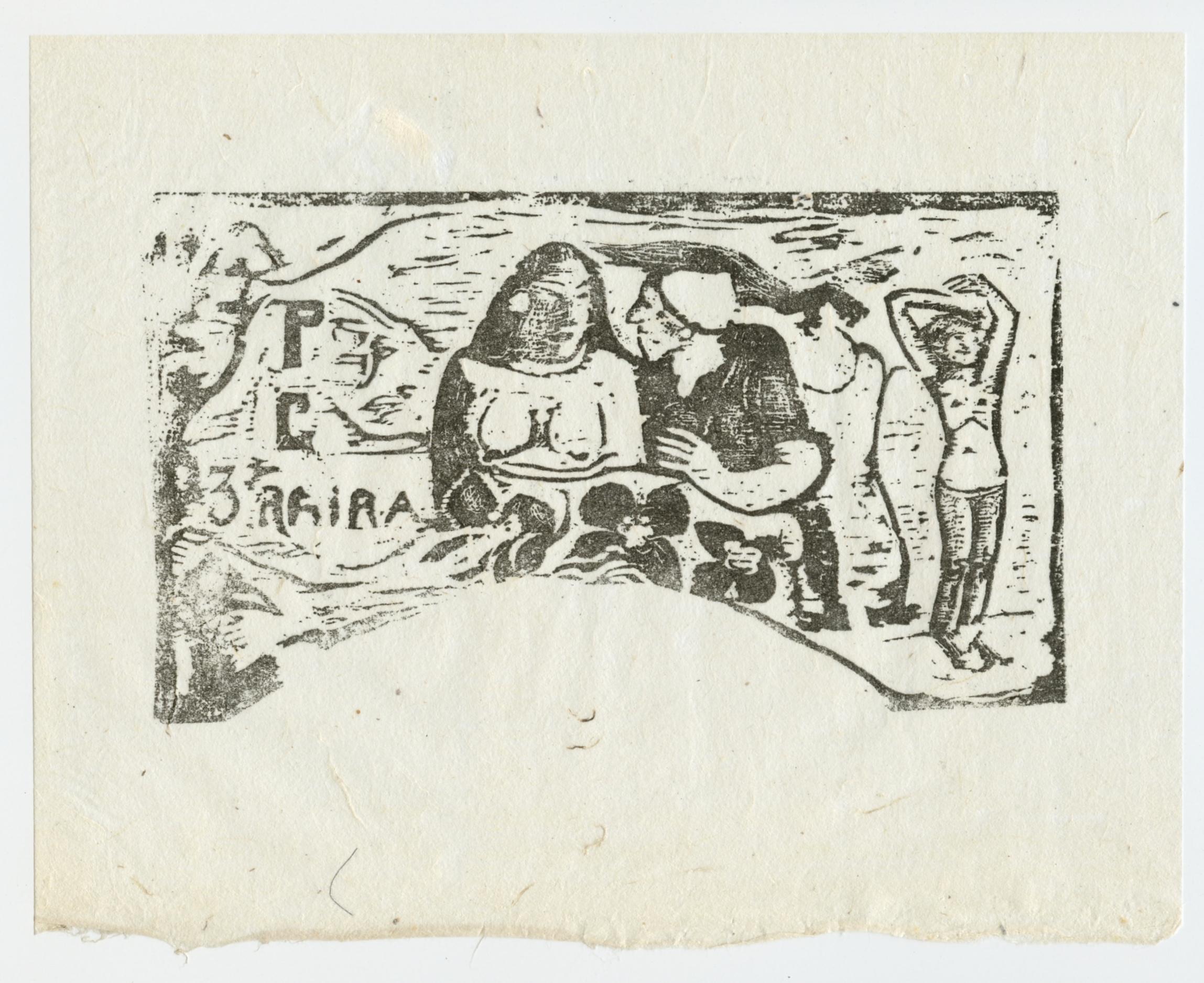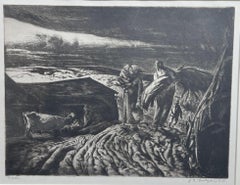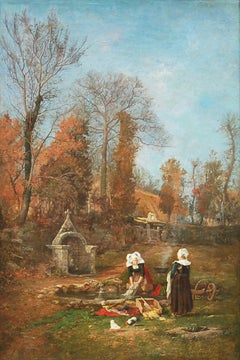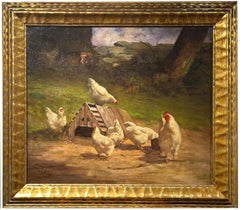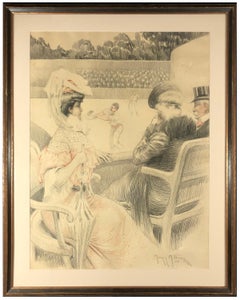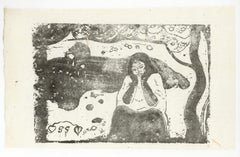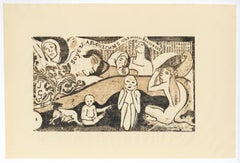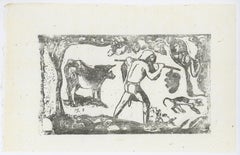Items Similar to Joies de Bretagne
Want more images or videos?
Request additional images or videos from the seller
1 of 11
(after) Paul GauguinJoies de Bretagnec. 1900
c. 1900
Price Upon Request
Price Upon Request
Price Upon Request
Price Upon Request
Price Upon Request
Price Upon Request
Price Upon Request
Price Upon Request
Price Upon Request
Price Upon Request
About the Item
Paul Gauguin (1848-1903)
Joies de Bretagne (Kornfeld 7 B)
zincograph, 1889, on simili Japon paper, from the second edition of circa 50 impressions, published by Ambroise Vollard after 1900, with wide margins.
Image approx. 8 x 9.5 inches
Framed approx 16.75 x 18.5 inches
- Creator:(after) Paul Gauguin (1848 - 1903, French)
- Creation Year:c. 1900
- Dimensions:Height: 16.75 in (42.55 cm)Width: 18.5 in (46.99 cm)
- Medium:
- Movement & Style:
- Period:
- Condition:
- Gallery Location:Missouri, MO
- Reference Number:1stDibs: LU74733365123
About the Seller
5.0
Vetted Professional Seller
Every seller passes strict standards for authenticity and reliability
Established in 1970
1stDibs seller since 2017
156 sales on 1stDibs
Typical response time: Several days
- ShippingRetrieving quote...Shipping from: Missouri, MO
- Return Policy
More From This Seller
View AllFodder
By John Costigan
Located in Missouri, MO
Fodder by John Costigan (1888-1972)
Signed Lower Right
Titled Lower Left
9.75" x 12.75" Unframed
17.5" x 19.75" Framed
John Edwards Costigan was born in Providence, Rhode Island on ...
Category
20th Century American Impressionist Landscape Prints
Materials
Etching
Price Upon Request
Breton Chores
Located in Missouri, MO
Clement Nye Swift
"Breton Chores" 1870
Oil on Canvas
Signed and Dated Lower Right
Canvas Size: approx 27 x18 inches
Framed Size: approx 34 x 35 inches
Provenance: Private Midwes...
Category
1870s Victorian Figurative Paintings
Materials
Canvas, Oil
Price Upon Request
Barnyard Buddies
By Paul E. Harney Jr.
Located in Missouri, MO
20 x 24 (canvas size)
25.5 x 29.5 (w/ frame)
Signed and Dated Lower Left
Paul Harney (1850-1915)
Born in New Orleans on October 21, 1850, he was a landscape, portrait and still-li...
Category
1910s American Impressionist Animal Paintings
Materials
Canvas, Oil
A Close Competition
By Maurice Milliere
Located in Missouri, MO
Maurice Milliere (1871-1946)
"A Close Competition" 1905
Colored Pencil on Paper
Signed and Dated Lower Left
Site: approx. 35 x 36 inches
Framed: approx. 43 x 35 inches
Born at Le Havre in Normandy on 12th December 1871, Millière began his art education in his home town but soon transferred to l'Ecole des Beaux-Arts in Paris, where he studied portraiture, life drawing and figure painting in the atelier of Leon Bonnat, whose pupils included Toulouse-Lautrec and Raoul Dufy. He also studied at l'Ecole des Arts Decoratifs. His skill as a draughtsman translated quickly into success as a cartoonist and illustrator and his brilliant interpretation of the "Modern Parisienne" soon became known as the "Petite femme...
Category
Early 1900s Art Nouveau Figurative Drawings and Watercolors
Materials
Paper, Color Pencil
Price Upon Request
Alongside
By Tod Lindenmuth
Located in Missouri, MO
Alongside, 1941
Tod Lindenmuth (American, 1885-1976)
Color Woodblock Print
9 x 7 inches
19.75 x 14.5 inches with frame
Signed Lower Right
Titled and Dated Lower Left
A founder of the Provincetown Art Association and one of the original Provincetown Printers, Tod Lindenmuth was a semi-abstract painter and graphic artist who did much to promote modernist styles. Although he was much influenced by Abstract Expressionism, his subject matter was realistic enough to be recognizable. He did linoleum cuts and was one of the first to work with that medium, and towards the end of his life, he experimented with collage. In the 1930s, he had commissions for the Public Works of Art Project and the Works Progress Administration.
Lindenmuth was born in Allentown, Pennsylvania. He studied with Robert Henri at the New York School of Art in Manhattan, and in Provincetown with E. Ambrose Webster and George Elmer Browne.
He first exhibited in Provincetown in 1915, and between 1917 and 1928 served on the jury for the Provincetown Art Association's 'First Modernistic Exhibition". He exhibited regularly with the Society of Independent Artists in New York.
He married artist and illustrator Elizabeth Boardman Warren...
Category
1940s American Modern Figurative Prints
Materials
Color
Sharing Bon-Bons
By Victor Gabriel Gilbert
Located in Missouri, MO
Early 20th Century Oil Painting by Victor Gilbert. Canvas dimensions 14.75 x 18 inches. Framed dimensions 22 x 25 inches.
Born Paris, France 1847; Died 1933
Victor Gilbert's natural ability as an artist was recognized early, but his family lacked the financial resources to send the young man to the École des Beaux-Arts. Rather than enrolling in the École, Gilbert was apprenticed to Eugene Adam as an artisan painter and decorator. His only formal education was evening classes with Pierre Levasseur at the École de la ville de Paris.
Perhaps it was his early immersion into la vie quotidienne that formed the basis for his later choices of subject matter for his art, that of the markets and streets of Paris.
Despite his lack of formal training, Gilbert's admissions to the Paris Salons of 1873 and 1874 were very well received by audiences and critics alike; at this time he was supported by the dealer Paul Martin, who was an important proponent of the Impressionist movement.
Gilbert emerged in the early 1880s as the primary Realist painter to record the French marketplace...
Category
Early 20th Century French School Figurative Paintings
Materials
Canvas, Oil
Price Upon Request
You May Also Like
Miseres Humaines, souvenir de Bretagne
By (after) Paul Gauguin
Located in Henderson, NV
This impression (after the original woodcut) was printed on japon paper in 1943 in an edition of 250, and is one of Gauguin's beautiful Tahiti compositions. Image size: 7 3/4 x 11 3/...
Category
1940s Post-Impressionist Prints and Multiples
Materials
Lithograph
Soyez amoureuses, vous serez heureuses
By (after) Paul Gauguin
Located in Henderson, NV
The English title is "Be in Love and You Will Be Happy". This impression (after the original woodcut) was printed on japon paper in 1943 in an edition of 250, and is one of Gauguin's...
Category
1940s Post-Impressionist Prints and Multiples
Materials
Lithograph
Changement de residence
By (after) Paul Gauguin
Located in Henderson, NV
This impression (after the original woodcut) was printed on japon paper in 1943 in an edition of 250, and is one of Gauguin's beautiful Tahiti compositions. Image size: 6 1/4 x 12 in...
Category
1940s Post-Impressionist Prints and Multiples
Materials
Lithograph
Le Porteur de Fei
By (after) Paul Gauguin
Located in Henderson, NV
This impression (after the original woodcut) was printed on japon paper in 1943 in an edition of 250, and is one of Gauguin's beautiful Tahiti compositions. Image size: 6 1/2 x 11 in...
Category
1940s Post-Impressionist Prints and Multiples
Materials
Lithograph
Gauguin, Change of Residence (Changement de résidence), Gauguin (after)
By Paul Gauguin
Located in Southampton, NY
Woodcut on vélin Utopian paper. Unsigned and unnumbered, as issued. Good Condition. Notes: From the folio, Gauguin, A portfolio of 12 color woodblocks, Paul Gauguin, French, 1848-1903 from the collection of the Museum Of Fine Arts, Boston, 1946. Rendered by Albert Carman (1899-1949); published the Museum Of Fine Arts, Boston and The Studio Publications, Inc., New York and London; printed by Holme Press Inc., New York, in an edition of MMMD. Excerpted from the folio, Paul Gauguin and Emil Bernard at Pont-Aven, Brittany, in 1888, each made a bas-relief, wooden panel to decorate a piece of furniture for a friend. In order to keep a record of their designs, a few inked impressions were made on paper. The illustration at left is a reproduction of a print which is possibly one of the above mentioned. It is further possible that this experiment later gave Gauguin the idea of making woodcuts. Just as his work in painting expressed a revolt against the overemphasis on factual representation of the nineteenth century in favor of decorative pattern and color, so also his woodcuts leaned strongly to the same side of the balance. Ten of the cuts reproduced (all excepting Soyez Amoureuses and Changement de Residence), which constitute the whole of his best known series, were made at Pont-Aven beginning in the fall of 1894, after Gauguin's return from his first trip to Tahiti and after he broke his ankle. They were at first roughly cut with a common carpenter's gouge, and the flat surfaces sandpapered and engraved with a sharp in-strument, perhaps an engraver's burin. A few trial proofs were printed in black ink only. Then the hollows were deepened with a woodcutter's gouge and highlights were added. An edition of thirty to fifty impressions of each subject, with the addition of color blocks (one, two or three), was made by Louis Roy...
Category
1940s Post-Impressionist Figurative Prints
Materials
Woodcut
$716 Sale Price
20% Off
Free Shipping
Le Sourire 1
By (after) Paul Gauguin
Located in Henderson, NV
This impression (after the original woodcut) was printed on japon paper in 1943 in an edition of 250, and is one of Gauguin's beautiful Tahiti compositions. Image size: 4 1/4 x 7 1/4...
Category
1940s Post-Impressionist Prints and Multiples
Materials
Lithograph
More Ways To Browse
William Hogarth Beauty
Yoko Ono Lithograph Harold Town
Zamy Steynovitz Serigraph
Zeno Giglietti
18th Century Shoe Buckle
1960 1970 Posters
Abraham Lincoln Emancipation Proclamation
Ak47 Lotus
Al Hirschfeld Barbra Streisand
Alex Katz Bicycle
Alex Katz Christy
Alex Katz Twilight
Alice Ravenel Huger Smith
Alvar Aalto Poster
Andre Gregory
Antique Trunk Lithographs
Aristide Bruant Dans Son Cabaret
Art Nouveau Artemis
